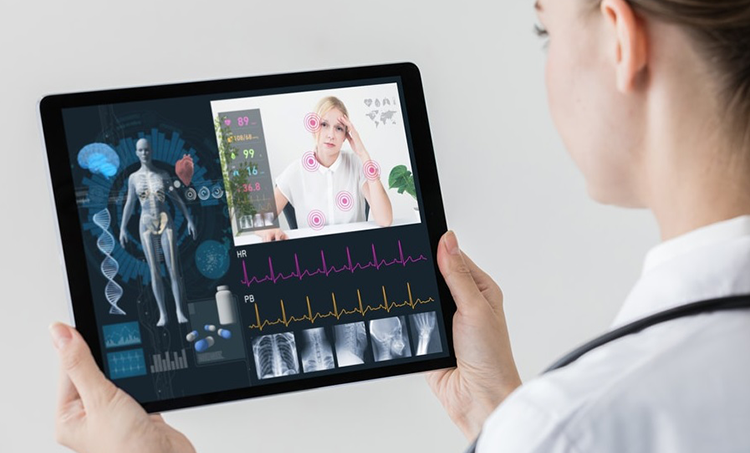The breakthroughs in modern technology have revolutionized the health care industry, and one of the greatest positive aspects is the ability to slightly monitor people. remote patient monitoring platform or RPM technology will allow medical professionals to monitor patients’ essential symptoms and health metrics in actual-time, even should they be not within the exact same regional location. This technology is modifying the healthcare landscape by offering prompt and correct information about sufferers, which can cause better results, lowered expenses, and increased quality of care. Within this post, we are going to explore the thought of RPM along with its advantages.
1. What is Remote patient monitoring (RPM)?
Remote patient monitoring (RPM) can be a technology that allows medical professionals to recover and monitor patients’ physiologic data including sugar levels, heartrate, blood pressure, and fresh air saturation ranges, and the like, by way of electronic digital units or distant devices. This details are then passed on electronically to health-related companies, who is able to then review it in real-efforts and make informed judgements with regards to a patient’s attention.
2. Benefits associated with Remote patient monitoring
Remote patient monitoring modern technology offers several advantages to health care companies and patients, including:
a. Increased Top quality of Proper care: RPM modern technology allows medical professionals to check people consistently, supplying all of them with actual-time info which helps them make educated decisions. As a result, they may identify and control sufferers more efficiently, resulting in better overall health outcomes.
b. Improved Patient Safety: Distant tracking units can warn healthcare companies if patients’ overall health metrics deviate through the norm, prompting these to get fast action before an issue escalates.
c. Reduced Health-related Costs: RPM technological innovation might help decrease health-related costs by reduction of the number of healthcare facility readmissions, staying away from unneeded emergency room appointments and cutting down the total cost of health care.
d. Elevated Entry to Treatment: RPM technologies provides sufferers with use of medical treatment, no matter their location. This can be particularly beneficial for senior citizens or individuals with freedom concerns who may not be able to go to the healthcare facility regularly.
3. Applications of Remote patient monitoring
RPM modern technology will be utilized in different health-related options, which includes hospitals, centers, and long-term care establishments. Some of its most popular apps include:
a. Chronic Condition Administration: RPM technological innovation is an efficient instrument for handling chronic circumstances including diabetes, hypertension, and cardiovascular disease, and the like. By keeping track of patients’ important signs, health care companies can keep track of and change their proper care ideas appropriately, leading to far better outcomes.
b. Postoperative Treatment: RPM technologies can boost postoperative patient benefits by remotely monitoring patients’ rehabilitation and finding any complications at the beginning.
c. Getting older Population Treatment: RPM technology gives care providers with genuine-time information regarding their patients’ wellness, allowing these to supply correct care which will help prevent issues.
4. The Future of Remote patient monitoring
As technology will continue to change, we could anticipate seeing far more inventions in remote patient monitoring programs. A number of the upcoming developments may include:
a. Genuine-time remote diagnostics employing artificial knowledge
b. Real-time far off healthcare interventions
c. Wide-spread setup of RPM home based medical care configurations
In short:
Remote patient monitoring technology has transformed the healthcare industry by supplying appropriate and accurate details about people, even if they’re not within the very same area. This technological innovation gives several positive aspects, including improved good quality of treatment, improved patient security, lessened health-related costs, and elevated use of attention. Its applications spread throughout various health-related options which makes it a powerful contender for future years of healthcare. The potential implementation of artificial knowledge to aid analyze wellness information contributes to RPM an essential instrument that can increase medical care outcomes significantly. Overall, RPM technologies is actually a online game-changer that can continue to convert the medical industry, so we can expect to see more innovations in the foreseeable future.
